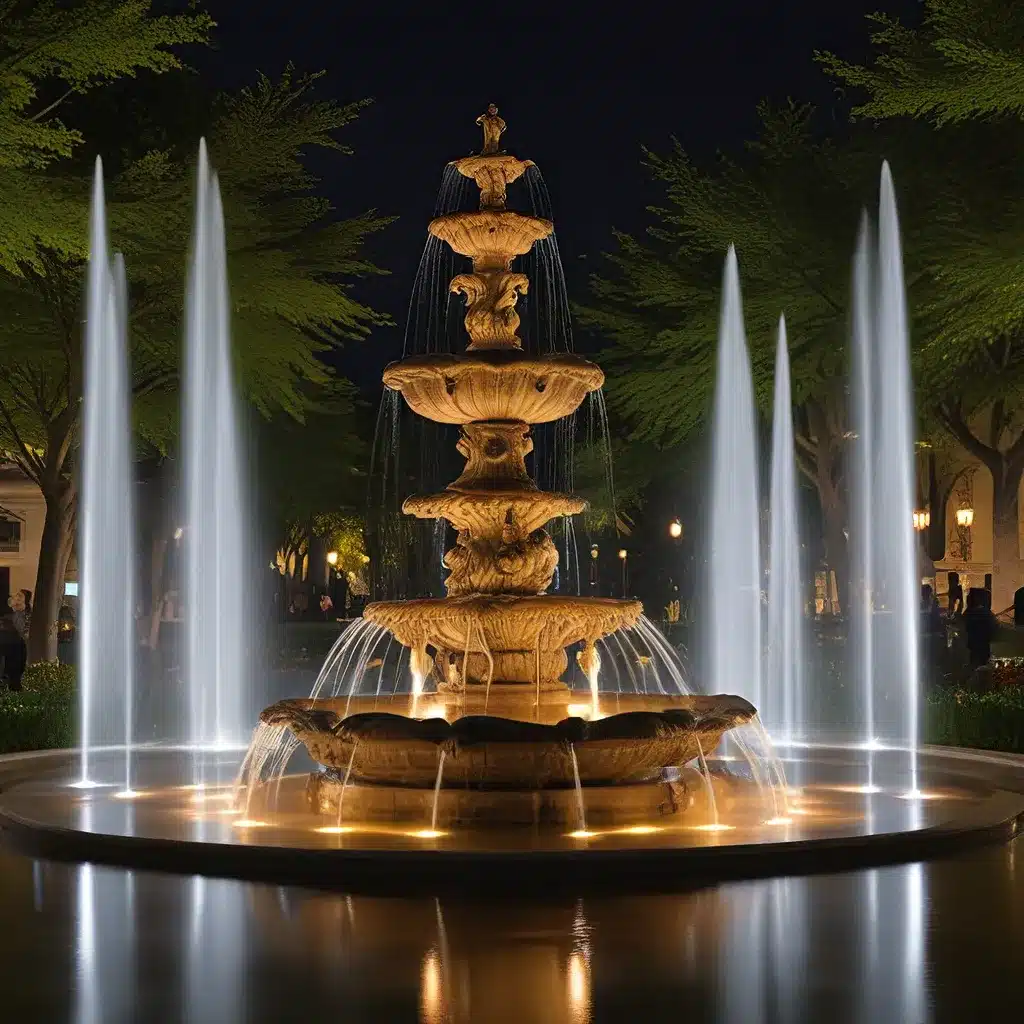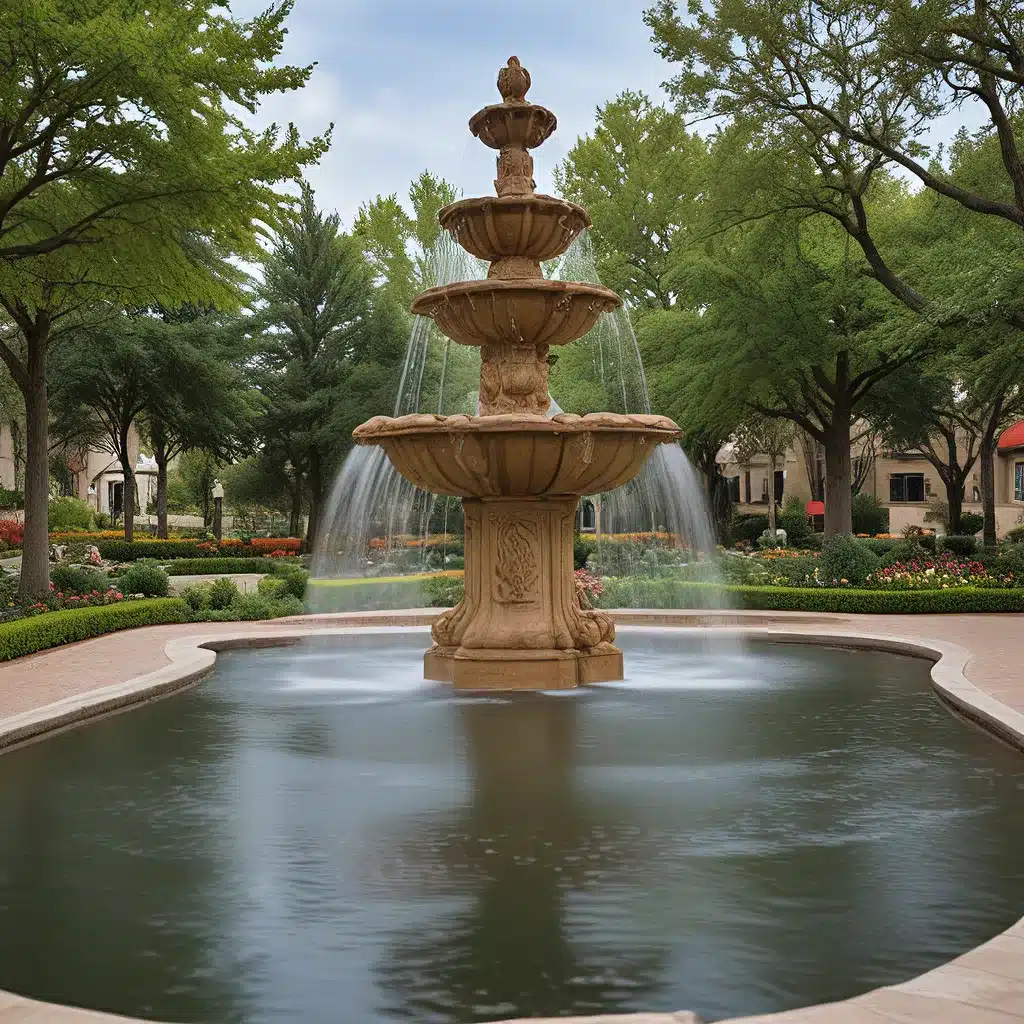
Fountain Design Essentials – Welcome to Fountain Lights
Fountain Design Essentials – Welcome to Fountain Lights

As a lifelong fountain enthusiast, I’ve always been fascinated by the intricate dance of water that captivates our senses. From the grand cascading displays of historic masterpieces to the modern, high-tech marvels that mesmerize crowds, the world of fountain design is truly awe-inspiring. But what lies beneath the surface – the hidden currents, the complex engineering, and the delicate balance of art and science? Let’s dive into the fascinating realm of fountain hydraulics.
Fountain hydraulics is an intricate and captivating aspect of fluid mechanics, involving the study and application of how water moves and is controlled in these captivating water displays. This field combines the principles of engineering physics and aesthetics to create visually stunning and technically proficient water shows. It’s not just about creating beauty – it’s also a testament to human ingenuity in manipulating one of nature’s most versatile elements: water.
Hydraulics, the branch of science concerned with the practical applications of fluids in motion, is at the heart of fountain design. In the context of fountains, it deals with how water is moved, controlled, and ultimately showcased. The two fundamental principles that govern fountain hydraulics are hydrostatics, the study of fluids at rest, and hydrodynamics, the study of fluids in motion. Understanding the delicate balance between these two forces – gravity and pressure – is crucial in designing a fountain that functions reliably and creates the desired visual effect.
At the core of a fountain’s hydraulic system are the pumps, responsible for moving water throughout the intricate network of pipes and channels. There are several types of pumps used in fountains, including submersible pumps and external pumps. Submersible pumps, placed underwater, are ideal for smaller fountains as they are quiet and easy to install. External pumps, on the other hand, are more powerful and suitable for large-scale, elaborate fountains, as they are installed outside the water.
The choice of pump depends on factors like the fountain’s size, the height of water projection needed, and the complexity of the water patterns. Selecting the right pump is crucial in achieving the desired visual effects and ensuring the fountain’s efficient operation.
The pipes and channels that transport water from the source to the fountain’s display elements are critical components in the hydraulic system. The material and design of these components are essential for efficient water flow and longevity. Smaller, simpler fountains often use PVC or plastic pipes, while larger, more elaborate designs may incorporate copper or stainless steel.
The diameter and length of the pipes influence the water pressure and flow rate, which are key to achieving the desired visual effects. Factors like pressure and flow rate determine the size and type of nozzles and jets that can be used, ultimately shaping the overall appearance of the fountain.
The nozzles and jets are the final elements where water exits the fountain system, and they play a vital role in shaping the water display. Different nozzle types create various effects, from a gentle spray to a powerful jet. The design and positioning of these nozzles are central to the aesthetic appeal of the fountain, allowing for intricate patterns and designs.
Understanding the dynamics of water flow is crucial in fountain design. Laminar flow, characterized by smooth, orderly water movement, creates sleek, glass-like streams. In contrast, turbulent flow, with its chaotic and irregular movement, is used to create lively, splashy effects. Manipulating these flow types allows designers to craft a wide range of visual experiences.
The velocity and pressure of water in a fountain must be carefully controlled to achieve specific effects. High-pressure systems can propel water to impressive heights, while lower pressure creates gentler, more cascading flows. Velocity is adjusted through pump power and pipe sizing, allowing for precise control over the fountain’s dynamics.
The interplay between velocity and pressure is governed by fundamental principles like Bernoulli’s Principle and Pascal’s Law. Bernoulli’s Principle explains how velocity and pressure interact within a moving fluid, which is essential for designing fountains that need to balance these two forces. Pascal’s Law, stating that pressure applied to a confined fluid is transmitted equally in all directions, underpins the operation of hydraulic systems in fountains.
One of the primary challenges in fountain hydraulics is balancing aesthetic goals with engineering realities. Designers must consider factors such as water distribution, wind interference, and maintenance needs – all while creating visually appealing and emotionally resonant displays.
Sustainability has become a crucial aspect of modern fountain design. Innovations in hydraulic technology focus on water conservation, energy-efficient pumps, and environmentally friendly materials. Recirculating water systems are now standard in fountain design, minimizing water waste and loss.
The future of fountain hydraulics lies in the integration of smart technologies and automation. This includes the use of sensors and computer-controlled systems to optimize water usage and choreography, as well as the incorporation of renewable energy sources to power the hydraulic systems.
As we look to the future, fountain design continues to evolve, embracing new technologies and sustainability practices. The continuous innovation in hydraulic systems and materials will undoubtedly lead to even more spectacular and environmentally friendly water displays in the years to come. Who knows what breathtaking creations the future holds?
If you’re as fascinated by the world of fountain hydraulics as I am, I encourage you to explore the wealth of resources available on the topic. And if you’re in the market for high-quality fountain lighting solutions, be sure to check out Fountain Lights – they’ve got the expertise and products to help you bring your fountain dreams to life.
Share to :